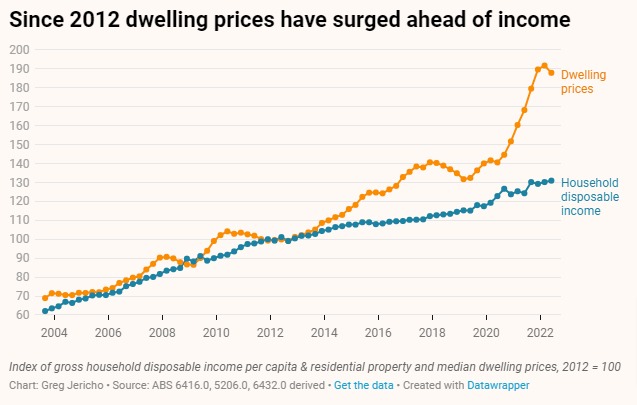Since the Reserve Bank began raising interest rates in May, the housing market has very much come off the boil.
But while the latest data from the ABS shows prices fell on average 2% across the nation in the June quarter, policy director Greg Jericho notes in his Guardian column that price remains well above what they were prior the pandemic.
During the GFC the majority of the stimulus measures directed towards construction were on public works – most notably the Building the Education Revolution. During the pandemic, however, the Morrison government targeted the housing market with its HomeBuilder program in conjunction with the Reserve Bank’s cutting interest rates. These served to set fire to the market as prices soared and affordability plummeted.
In June 2020, the average dwelling price in Australia was $689,400. That was around 13.4 times the average annual household disposable income of $51,487. Now the average household disposable income is up to $56,129, while the average dwelling price is now some 16.4 times that at $921,500.
Even worse, ten years ago the average dwelling price was just 11.4 times.
Housing policy has for too long been driven by keeping prices rising, and combined with flat income growth, it has seen a generation of Australians left out of the housing market.

You might also like
Want to lift workers’ productivity? Let’s start with their bosses
Business representatives sit down today with government and others to talk about productivity. Who, according to those business representatives, will need to change the way they do things?
Go Home On Time Day 2025. As full timers disconnect, part timers are doing more unpaid overtime
New research by the Centre for Future Work at The Australia Institute has revealed a disturbing new twist when it comes to unpaid overtime in Australia.
Feeling hopeless? You’re not alone. The untold story behind Australia’s plummeting standard of living
A new report on Australia’s standard of living has found that low real wages, underfunded public services and skyrocketing prices have left many families experiencing hardship and hopelessness.

